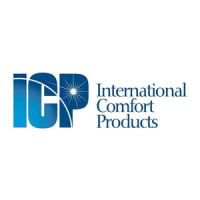
Do you have a question about the ICP N9MP1 and is the answer not in the manual?
| Stages | Single Stage |
|---|---|
| Blower Motor | Multi-Speed |
| Cabinet | Heavy-Gauge Steel |
| Heat Exchanger Material | Aluminized Steel |
| Fuel Type | Natural Gas |
Requirements for providing outdoor air for combustion and ventilation in specific spaces.
Guidelines for using indoor air for combustion and ventilation under specific conditions.
Procedure to ensure proper venting and combustion air for appliances.
Evaluating and addressing exposure to chemicals that may harm the furnace.
Instructions on selecting the correct diameter for exhaust and combustion air piping.
Guidelines for installing vent and combustion air piping, including material selection.
Clearances for direct vent termination based on location and appliance type.
Clearances for non-direct vent terminations based on location and appliance type.
Procedures for properly sealing vent and combustion air piping to prevent leaks.
Guidelines and warnings for joining pipe and fittings using solvent cement.
Procedures for connecting vent pipes and ensuring proper termination clearances.
Required clearances for concentric vent termination based on location and height.
Details on concentric vent termination kits for gas-fired condensing furnaces.
Guidelines for properly sizing and installing gas supply pipes according to codes.
Manifold pressure and orifice sizes for natural gas at various altitudes.
Manifold pressure and orifice sizes for LPG/Propane gas at various altitudes.
Manifold pressure data for the 80,000 BTUH model and alternate input models.
Manifold pressure data for LPG/Propane gas for the 80,000 BTUH model.
Requirements for electrically wiring and grounding the furnace according to codes.
Procedure to check and set the correct air temperature rise through the furnace.
Steps to adjust manifold gas pressure with burners operating.
Inspecting main burner flames for proper color, stability, and position.
Explanation of diagnostic codes indicated by the control board's LED.
